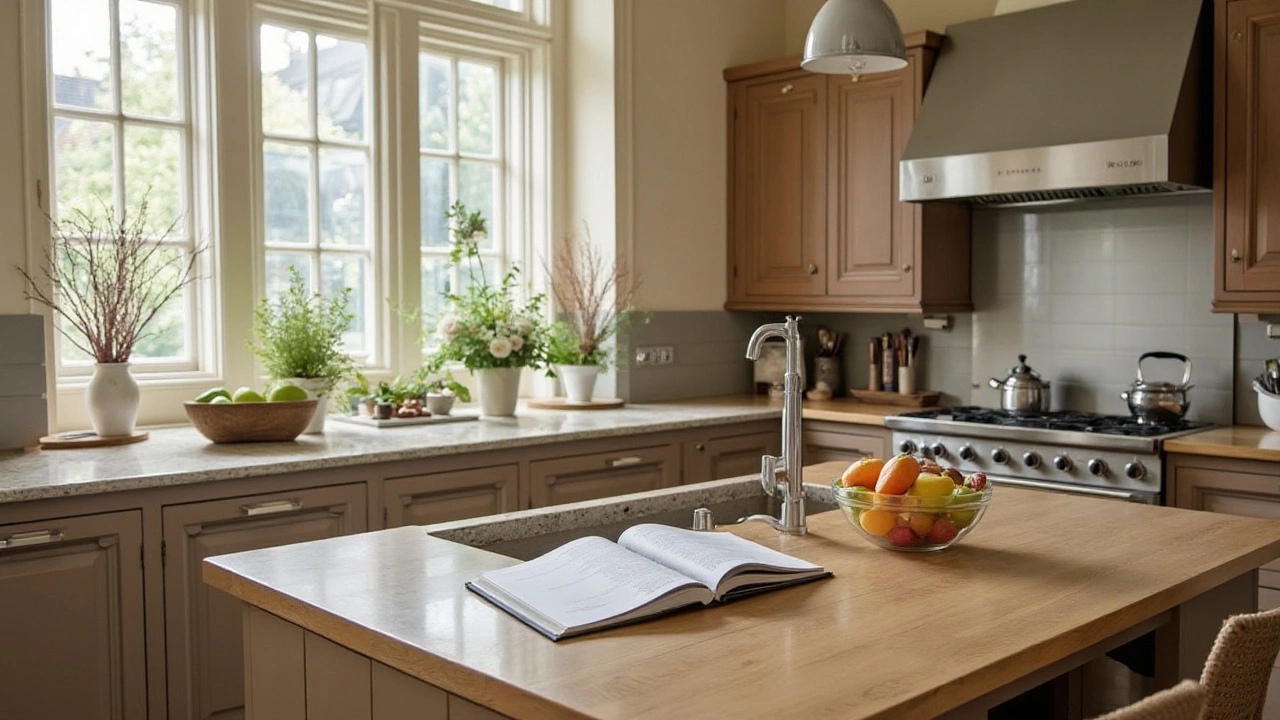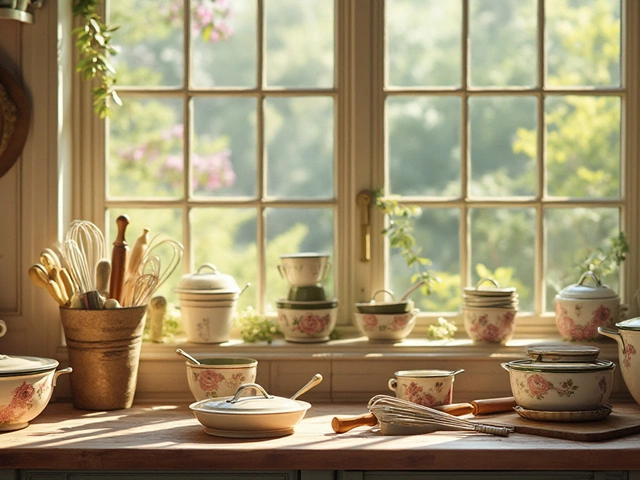When you walk into a place where delicious meals are created, you enter the realm of the kitchen. The kitchen is not just a physical space; it’s a hub of creativity and day-to-day culinary adventures. This functional area forms the heart of the home, where families gather, meals are shared, and flavors abound.
On the other hand, kitchenware consists of all those indispensable tools and gadgets that turn cooking dreams into reality. From the pots and pans that sizzle with culinary possibilities to the sharp-edge knives that make food preparation a breeze, kitchenware brings functionality and flair to the kitchen. Knowing the distinction between the kitchen itself and the kitchenware within it can enhance your cooking journey by ensuring each tool serves its purpose efficiently.
- Defining the Kitchen
- Exploring Kitchenware
- How They Complement Each Other
- Tips for Selecting Kitchenware
Defining the Kitchen
The kitchen is often regarded as the centerpiece of a home, a space distinctly designed for the preparation and enjoyment of meals. It is equipped with essential appliances and utilities that facilitate various culinary tasks. These can include everything from stoves and ovens that cook our food to refrigerators that keep our ingredients fresh. Notably, the modern kitchen embodies a blend of functionality and style, a reflection of technological advancements and evolving design trends. In historic homes, kitchens were once separate entities meant strictly for the cook and staff; today, they have transformed into open spaces that encourage social interaction and entertaining.
A fundamental aspect of defining a kitchen is understanding its layout, which significantly impacts its efficiency. Whether it's a U-shape, L-shape, or galley layout, the design should ease the flow of movement for anyone preparing meals. The ‘working triangle’ concept, which involves placing the sink, stove, and refrigerator in a triangular formation for optimal convenience, remains a guiding principle in kitchen design. As interior designer Nate Berkus once said,
"The heart of the kitchen is really about the people who come together in it."Indeed, the layout and accessibility of a kitchen often mirror a household’s lifestyle and culinary habits.
Moreover, a key component in this space is the integration of technology to boost convenience and efficiency. Various smart devices, ranging from app-controlled ovens to sensors that monitor ingredient freshness, have made cooking less time-consuming and more pleasurable. Another notable feature of modern kitchens is the emphasis on sustainability. There is a growing trend towards using eco-friendly materials for cabinetry and countertops, and many homeowners opt for appliances that reduce energy consumption. This shift is not only beneficial for the environment but also for homeowners seeking to reduce long-term utility costs. According to a recent study, kitchens with energy-efficient appliances can save an average of 30% more energy when compared to traditional setups, making them a worthwhile investment.
The kitchen also serves as a cultural hub within the home. It’s a place where traditional recipes are passed down from one generation to the next, where experimental dishes are concocted, and where family conversations flourish over shared meals. The aromas that waft through the house as meals are cooked are a testament to the heartwarming experiences that kitchens facilitate. Indeed, while its core function leans heavily on practicality, the kitchen’s ability to bring people together underscores its deeper significance in daily life. Thus, the definition of a kitchen transcends mere utility; it embodies the spirit of home life, offering both sustenance and a sense of belonging.
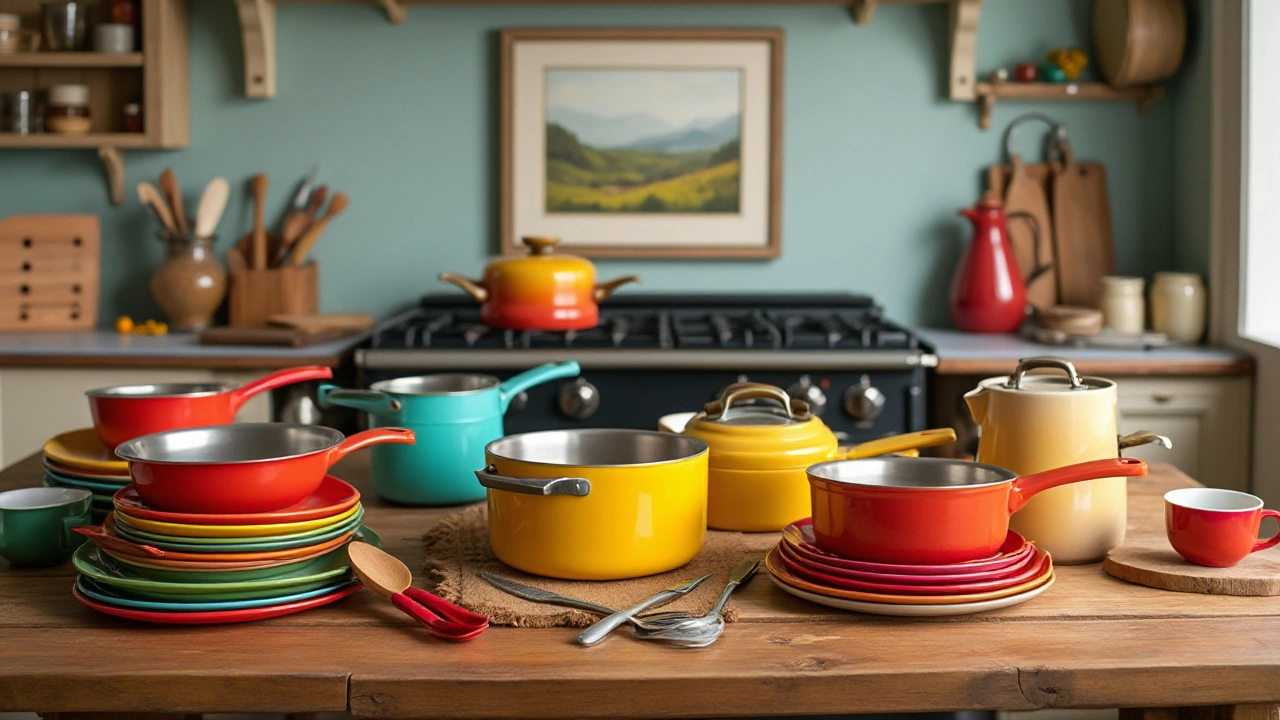
Exploring Kitchenware
As we delve into the realm of kitchenware, we discover an array of tools and gadgets that are as diverse as the dishes they help to create. Kitchenware includes everything from simple utensils to complex appliances, each designed to enhance the cooking process in different ways. Understanding what each piece of kitchenware offers can transform your culinary experience and streamline your time spent in the kitchen.
Kitchenware is broadly categorized into tools for preparation, cooking, and serving food. Preparation tools include items like measuring cups, mixing bowls, and peelers, indispensable assets for every cook. These tools help measure precision, a key ingredient in successful recipes. Cooking tools, such as pots, pans, baking sheets, and skillets, are made from diverse materials like stainless steel or cast iron, each providing unique cooking properties. How you choose these depends heavily on your cooking style and preferences.
Interestingly, a common kitchen knife set typically includes a chef's knife, a paring knife, and a serrated knife, covering the vast majority of cutting tasks. When buying knives, professionals often suggest investing in three core knives before expanding. For example, the renowned chef and author Anthony Bourdain said, "I don't need a $300 knife. I can do the same job, maybe better, with a $50 tool."
Then, there are the serving tools: ladles, slotted spoons, and spatulas. These are not only functional but can add an aesthetic element to your dining table. Beyond these standard categories, there are electrical appliances known as small kitchenware, encompassing blenders, food processors, and microwaves, which automate tasks, saving valuable time and effort. It is estimated that 75% of households use small kitchen appliances daily, underscoring their importance in modern cooking.
When it comes to storage, kitchen organizers and containers hold an essential role. Proper storage prolongs the freshness of ingredients and ensures easy access to your tools. A well-organized kitchen may involve drawer dividers for utensils, wall-mounted racks for pots and pans, and even magnetic strips for knives. This organization not only optimizes space but also contributes to a seamless cooking experience.
It's also important to consider the materials of your kitchenware. Stainless steel items are praised for their durability and resistance to rust. Cast iron, though heavy, offers superior heat retention, ideal for slow-cooking methods. Non-stick options, while convenient, require careful maintenance to prolong their life. Selecting the right material involves balancing durability, safety, and your cooking needs.
Finally, when selecting kitchenware, personal preference and lifestyle should guide your choices. While professional chefs may opt for high-end products, home cooks might find value in more affordable, versatile utensils. As you explore kitchenware, embrace options that align with both your culinary ambitions and the everyday reality of your kitchen time.
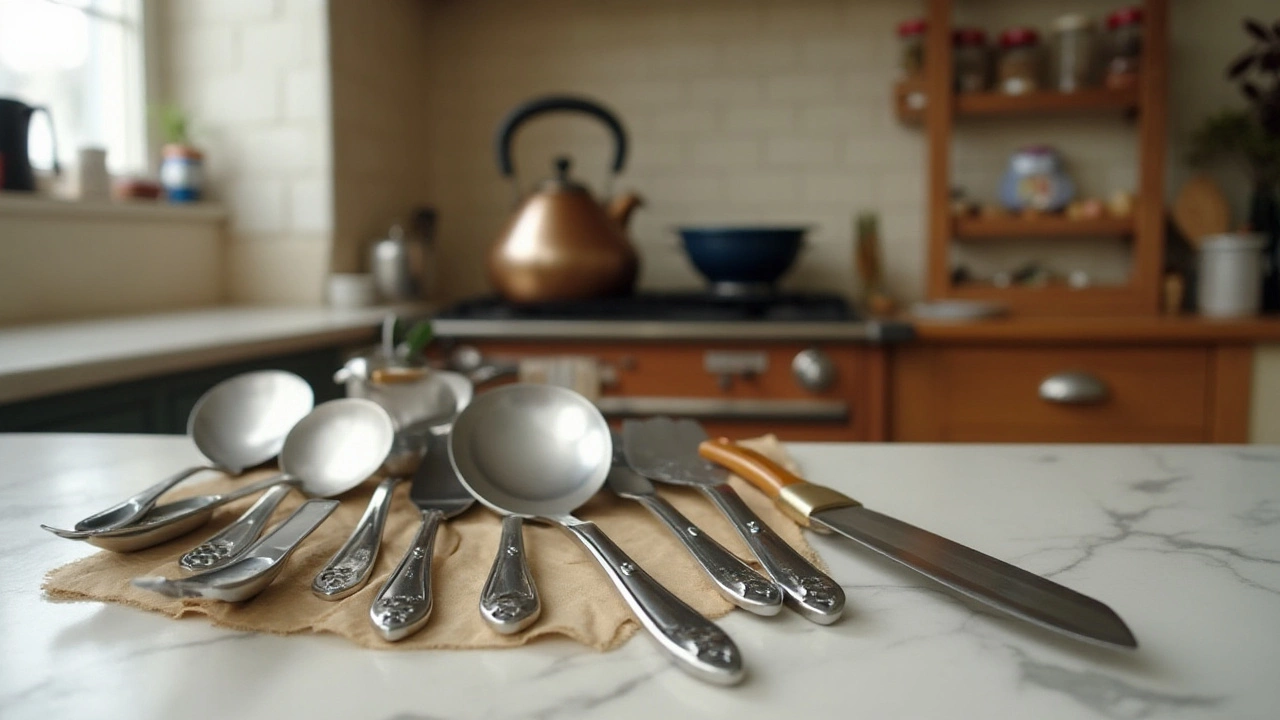
How They Complement Each Other
The kitchen serves as a stage while kitchenware performs like the actors bringing culinary art to life. The interaction between the two goes beyond mundane utility; it's a dance where each element plays an essential role. Imagine trying to whip up a delightful gourmet dish without a good set of kitchen tools. It would be akin to a play without actors, a song without melody. Every tool within the kitchenware arsenal - from spatulas to sizzling skillets - becomes an extension of the cook's intentions and creativity. The addition of the right utensils means tasks are executed with precision, thereby enhancing the quality of meals created within the kitchen.
Let's take a classic example: the humble yet indispensable frying pan. While the kitchen may provide the right heat through a top-grade stove, without the perfectly chosen pan, the results can be disappointingly different. The pan, with its material and design, influences cooking efficiency and food flavor, showing how these tools complement the kitchen's functionality seamlessly. Cooking tools, selected for their unique qualities, including material and design, help maintain the kitchen as a versatile and effective space.
Kitchens equipped with carefully chosen kitchen essentials allow cooks, whether novice or experienced, to embark on a journey of culinary mastery. A set of sharp, precise knives, for instance, not only speeds up preparation but also ensures that every chop, slice, and dice retains the texture and flavor integral to the dish. Imagine the joy of slicing a ripe tomato using a superbly crafted knife that feels like an extension of your own hand. This symbiotic relationship ensures that the kitchen remains a place of both practicality and experimentation.
It's interesting to note that according to a study in the Journal of Foodservice Business Research, functionality in the kitchen can significantly increase productivity by about 20% when appropriate kitchenware is used. This demonstrates how crucial the selection of these tools can be in maximizing the efficiency of the kitchen space. Additionally, ergonomically designed utensils help reduce strain and elevate the cooking experience, making the kitchen an inviting place to spend hours perfecting recipes.
"The kitchen is the heart of the home, influencing both the nourishment of the body and the spirit," notes renowned chef and author Alice Waters. Her words eloquently capture the essence of how the environment of the kitchen, partnered with the efficiency of the kitchenware, nurtures creativity and functionality in meal preparation.
Moreover, a fascinating fact is that the design of kitchenware can also influence the sustainability of a kitchen. Tools made from eco-friendly materials contribute to reducing the environmental footprint of everyday cooking activities. Wooden utensils, for example, offer a natural alternative to plastic, which is just one small step toward a greener kitchen without sacrificing quality or efficiency. This symbiotic complement between the kitchen and kitchenware reflects a conscious effort to balance aesthetics, practicality, and sustainability.
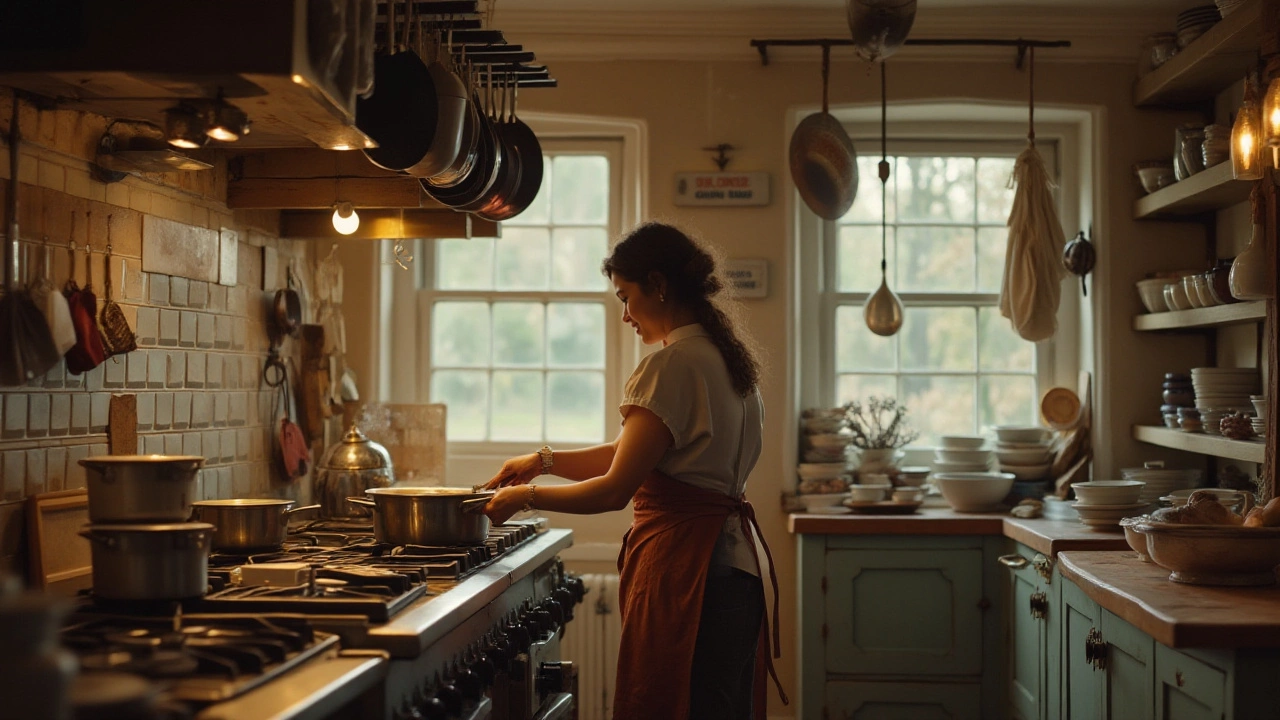
Tips for Selecting Kitchenware
Choosing the right kitchenware can transform your cooking experience, making it not just more efficient but also more enjoyable. With countless options available, from basic essentials to specialized gadgets, it’s essential to narrow down your choices based on your needs and preferences. Begin by assessing the kind of cooking you often do and consider what tools will serve those purposes best. For instance, if you love baking, investing in high-quality baking sheets and mixers can significantly enhance your pastry creation endeavors. Similarly, for those who enjoy elaborate meals, a diverse array of pots and pans can make meal preparation more fluid and versatile.
Quality should always be a paramount concern when selecting kitchenware. While it might be tempting to opt for cheaper options, remember that good quality often equates to durability and better performance. Stainless steel, for instance, is praised for its durability and ease of maintenance, making it a great choice for items such as pots and pans. Nonstick cookware is perfect for those looking to reduce their use of oils, though it requires gentle utensils to maintain the coating. As Julia Child once said,
"You don’t have to cook fancy or complicated masterpieces – just good food from fresh ingredients."The same applies to your kitchenware choices – focus on essentials that are well-made.
Another crucial aspect is the ease of maintenance. Nobody enjoys spending a lot of time scrubbing dishes after a satisfying meal, so opting for easy-to-clean materials can save you a lot of hassle. Enamel cast iron, for instance, can be easier to clean than traditional cast iron, while still offering the same even heat distribution. Care instructions should also be considered; some materials require specific cleaning methods to maintain their longevity.
Sustainability and personal values might also guide your choices. Many consumers today are leaning towards eco-friendly materials like bamboo or opting for fewer, but more versatile tools, to minimize clutter and excess. Multifunctional tools can be a boon for both small kitchens and those keen on reducing waste. A single appliance that functions as a pressure cooker, slow cooker, and rice cooker, for example, can replace three separate devices.
Lastly, create a wish list of items you might not need immediately but will want in the future. As your culinary skills expand, so will your need for more specific tools. Keeping a list can help you make informed purchases instead of impulsively buying whatever catches your eye at the moment. The act of selecting kitchenware isn’t just about filling your drawers and cabinets, it’s about equipping yourself with the right tools to make cooking a delightful and efficient activity.

